Table of Contents
Stative verbs are verbs that describe a state rather than an action. They express emotions, thoughts, possession, senses, and relationships. These verbs do not show physical activities but rather conditions that do not change instantly. Unlike action verbs, stative verbs are not usually used in continuous (progressive) tenses. For example, we say “I know the answer” instead of “I am knowing the answer.” Understanding stative verbs will help you form grammatically correct sentences.
What Are Stative Verbs?
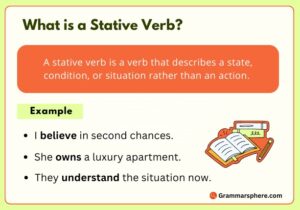
Stative verbs describe a state, not an action. They refer to thoughts, emotions, senses, relationships, or conditions
✅ I love learning English.
❌ I am loving learning English.
Here, love is a stative verb because it expresses an emotion, not a physical action
Types of Stative Verbs
Stative verbs can be divided into several categories:
1. Verbs of Emotion & Feeling
Expressing emotions or states of mind.
- Love, hate, like, prefer, dislike, fear, want
✅ Aisha hates loud noises.
❌ Aisha is hating loud noises.
2. Verbs of Thinking & Belief
Related to knowledge, belief, and mental states.
- Know, believe, understand, think (opinion), agree, doubt, remember
✅ Hamza believes in hard work.
❌ Hamza is believing in hard work.
3. Verbs of Senses
Describing how something appears or feels.
- See, hear, smell, taste, feel
✅ This perfume smells amazing.
❌ This perfume is smelling amazing.
4. Verbs of Possession & Measurement
Indicating ownership or measurement.
- Have, own, possess, belong, contain, consist of, cost, weigh
✅ Sara has a beautiful dress.
❌ Sara is having a beautiful dress.
5. Verbs of Relationship
Showing relationships between things.
- Be, seem, appear, resemble, depend, matter
✅ This problem seems complicated.
❌ This problem is seeming complicated.

Stative Verbs vs Action Verbs
| Feature | Stative Verbs | Action Verbs |
|---|---|---|
| Meaning | Express a state or condition | Show an action or movement |
| Continuous Form? | Rarely used in continuous form | Commonly used in continuous form |
| Examples | love, know, belong, appear | run, write, eat, jump |
✅ She understands the lesson.
❌ She is understanding the lesson.
✅ Ali writes a book.
✅ Ali is writing a book.
Rules of Stative Verbs
1. Stative verbs are not used in continuous tenses.
✅ I understand the problem.
❌ I am understanding the problem.
2. They describe states, not actions.
✅ She owns a car.
❌ She is owning a car.
3. Some verbs can be both stative and dynamic, depending on the meaning.
✅ I think he is right. (Opinion)
✅ I am thinking about the solution. (Process)
4. Stative verbs express emotions, thoughts, possession, and perception.
✅ He believes in honesty.
❌ He is believing in honesty.
5. They do not take -ing forms unless their meaning changes.
✅ This perfume smells nice.
❌ This perfume is smelling nice.
Common Mistakes with Stative Verbs
1. Using Stative Verbs in Continuous Tenses
❌ I am knowing the answer.
✅ I know the answer.
2. Using Action Verbs Instead of Stative Verbs
❌ She thinks of a solution. (If referring to an opinion, use “believes”)
✅ She believes in a solution.
3. Misunderstanding Verbs with Both Stative & Action Uses
- Some verbs can be both stative and action depending on the meaning.
| Verb | Stative Meaning | Action Meaning |
| Think | Believe (I think he’s right.) | Consider (I am thinking about my trip.) |
| Have | Possess (He has a car.) | Experience (He is having a good time.) |
| See | Perceive (I see the bird.) | Meet (I am seeing my friend today.) |
Frequently Asked Questions
1. What are stative verbs in English?
Stative verbs describe a state rather than an action. They refer to emotions, senses, possession, and relationships, and are usually not used in continuous tenses.
2. Can stative verbs be used in the continuous tense?
Most stative verbs do not take the continuous form. However, some can switch meaning when used in progressive tenses, like “think” or “see.”
3. What is the difference between stative and dynamic verbs?
Stative verbs express a state, while dynamic (action) verbs show physical or mental actions. Example: “She knows the answer” (stative) vs. “She is writing an essay” (dynamic).
4. How can I remember stative verbs easily?
Group them into categories: emotions, senses, possession, thought, and relationships. This helps in identifying them quickly in sentences.
5. Can “be” be a stative verb?
Yes, “be” is usually a stative verb when it means “exist” or “describe a state.” However, in informal English, it can be used in continuous form to express behavior: “You are being rude.”
You May Also Like

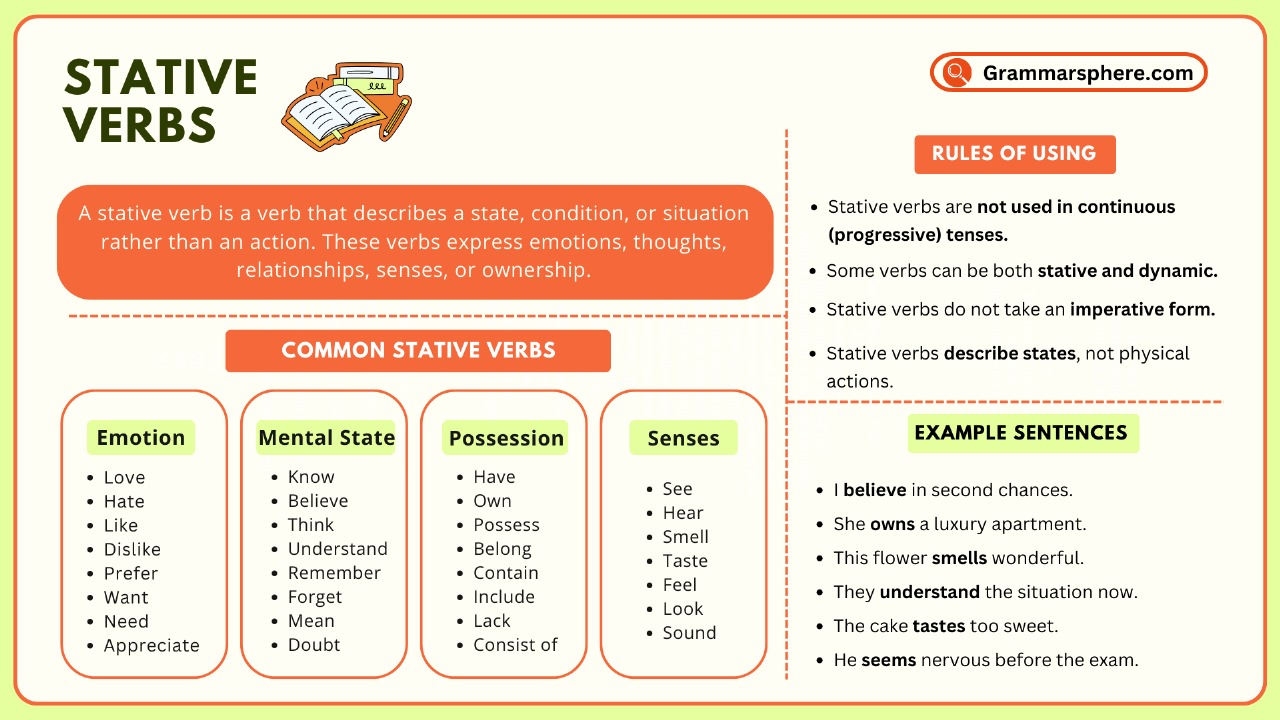
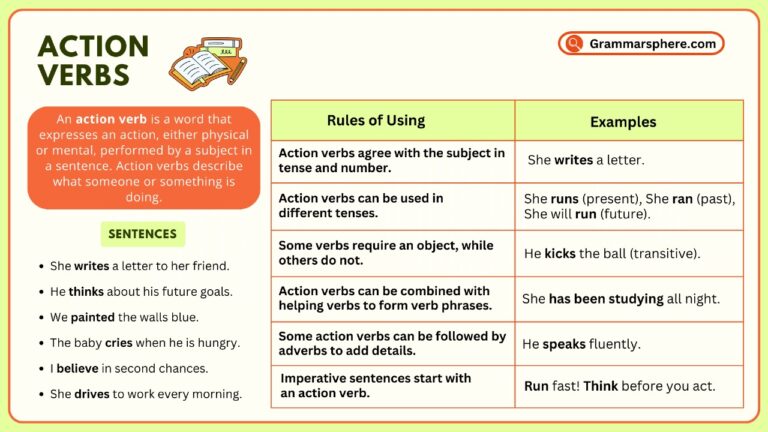

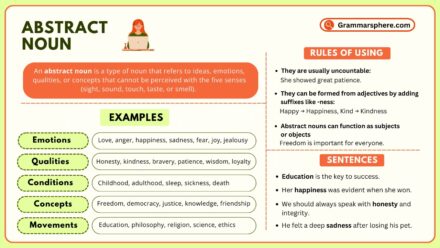
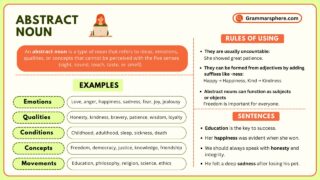
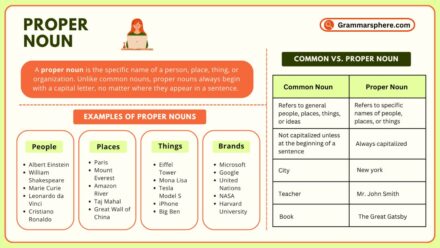
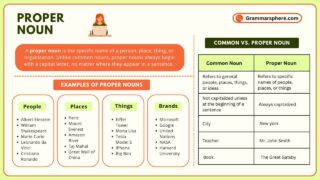
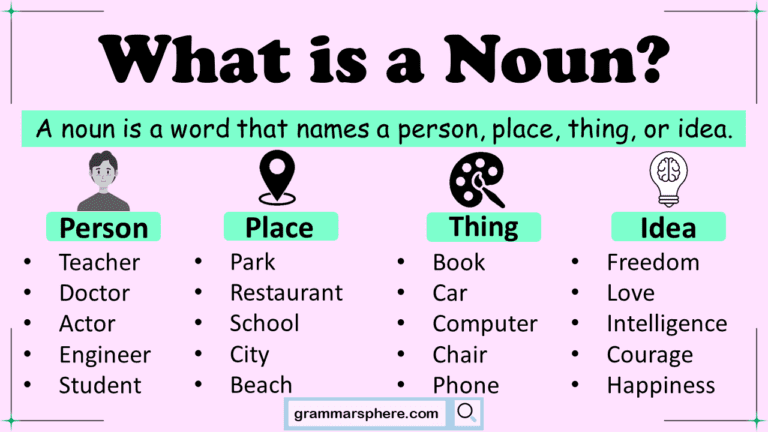
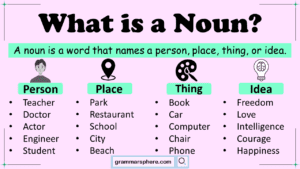
Leave a Comment